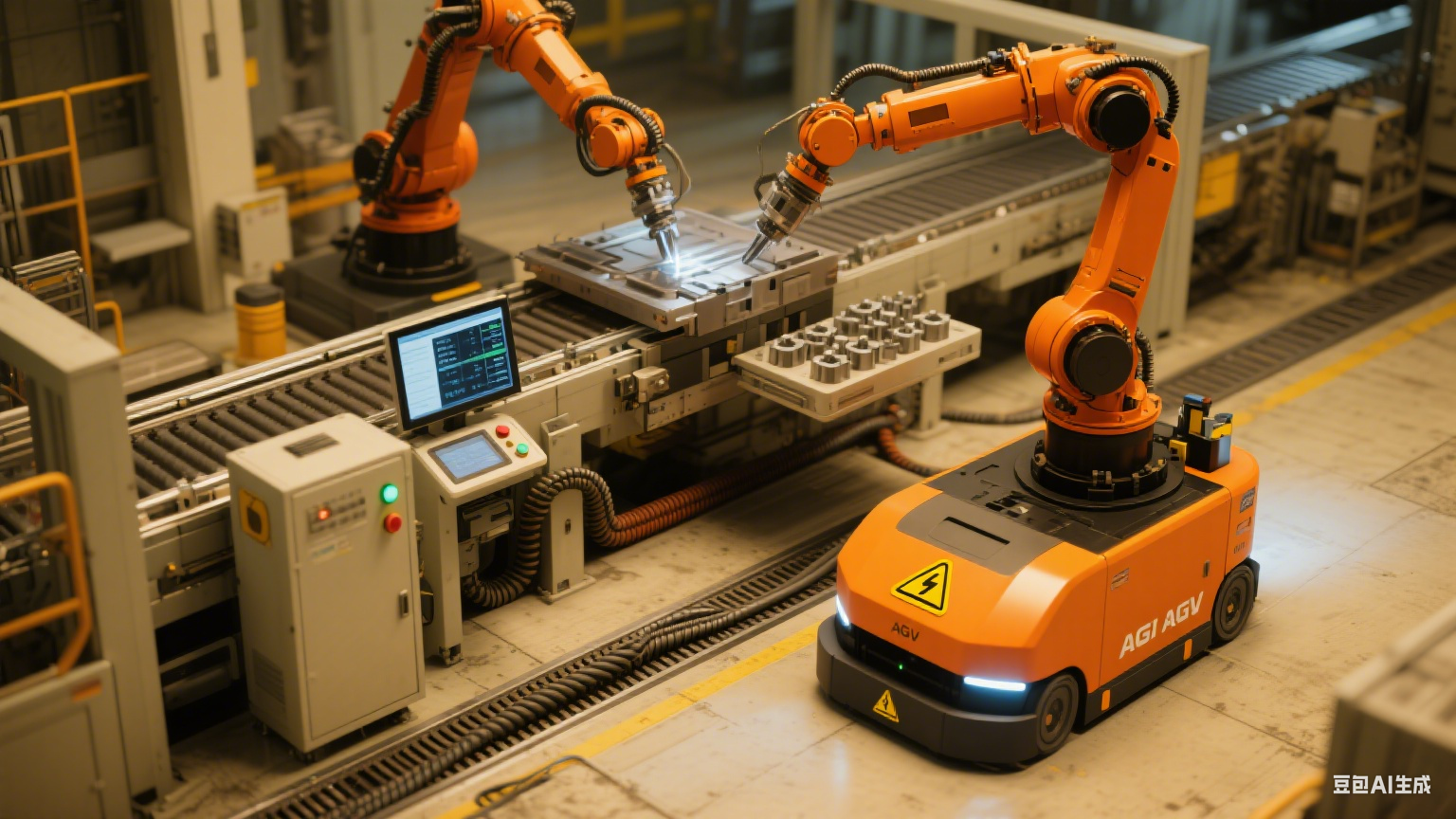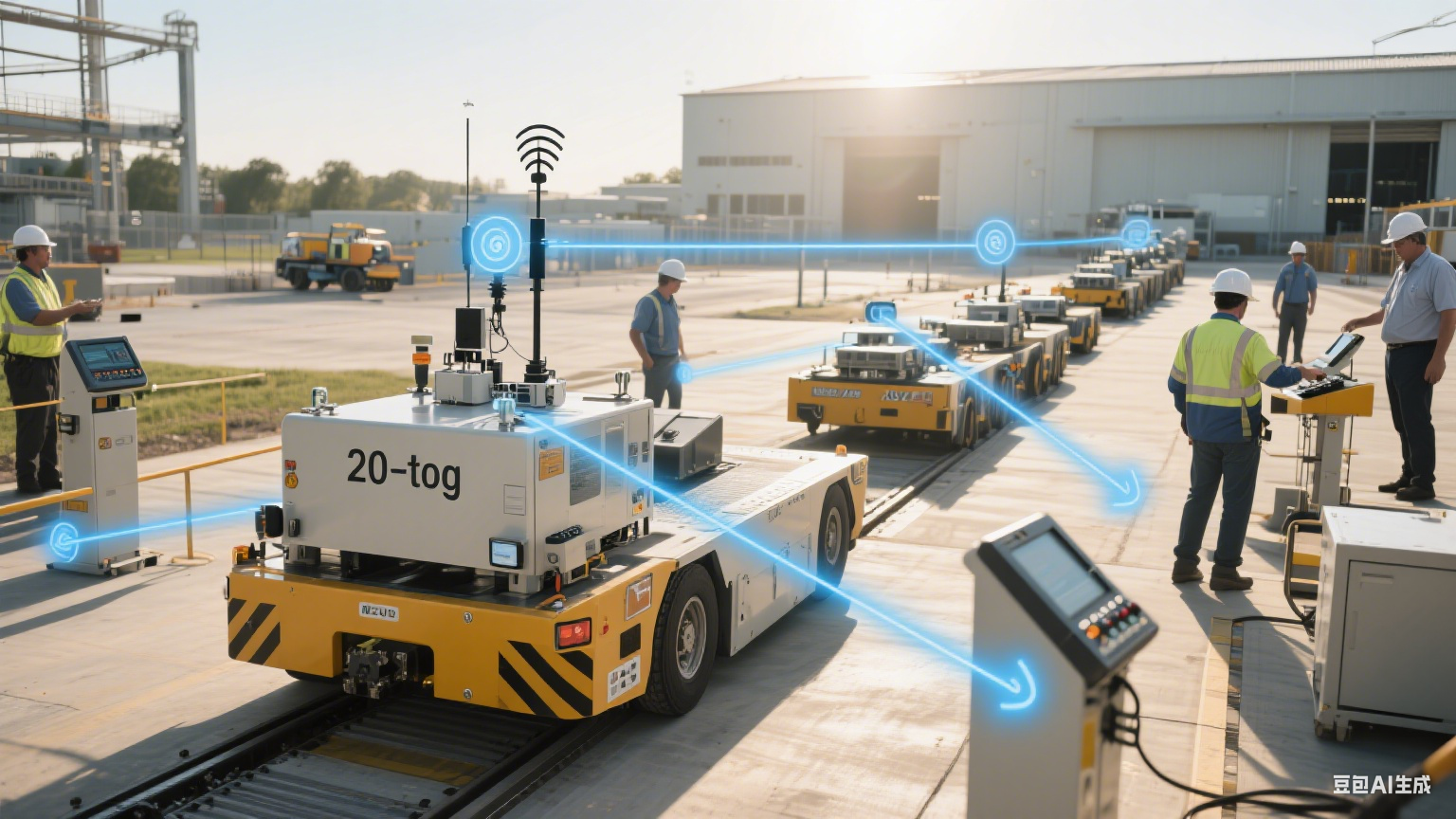AGV Automated Guided Vehicle: The Silent Revolution in Material Handling

Strong 8k brings an ultra-HD IPTV experience to your living room and your pocket.
Imagine a fleet of driverless vehicles seamlessly navigating a bustling factory floor or warehouse aisle, transporting materials with pinpoint accuracy, 24/7, without breaks or fatigue. This isn't science fiction; it's the reality enabled by the AGV Automated Guided Vehicle. An AGV is precisely that: an Automated Guided Vehicle, a mobile robot designed to transport materials autonomously within a defined operational area. Unlike traditional manually operated forklifts or carts, the core value proposition of an AGV automated guided vehicle lies in its ability to follow programmed paths or make intelligent navigation decisions, significantly enhancing efficiency, safety, and operational flexibility in industrial and logistics environments. The fundamental purpose of implementing an AGV automated guided vehicle system is to automate internal material flow, thereby optimizing resource allocation and minimizing human intervention in repetitive, sometimes hazardous, transport tasks.
Decoding AGV Navigation: The Guiding Intelligence
The defining characteristic of any AGV automated guided vehicle is its guidance system – the technology that tells it where to go. The evolution of guidance methods has significantly expanded the capabilities and applications of these versatile robots:
Traditional Guidance Systems:
Magnetic Tape/Guidance: The most established method. A magnetic tape is affixed to the floor, and sensors underneath the AGV automated guided vehicle detect this field, enabling it to follow the predefined path reliably. Simple, cost-effective, and robust for fixed routes.
Wire Guidance: An energized wire is embedded in the floor, creating an electromagnetic field. Sensors on the AGV automated guided vehicle track this field. Highly precise but inflexible, as path changes require significant floor modifications.
Optical Tape Guidance: Similar to magnetic tape, but uses colored or reflective tape on the floor detected by optical sensors. Less common now due to tape wear and visibility issues.
Modern, Flexible Navigation Systems:
Laser Target Navigation (Natural Feature/Landmark Navigation): This advanced method utilizes onboard LiDAR (Light Detection and Ranging) sensors. The AGV automated guided vehicle scans its surroundings and identifies fixed reflective targets or unique natural features (like walls, columns, racks) installed at known positions on a map. By triangulating its position relative to these targets/features, the vehicle navigates freely without physical floor modifications. Offers high flexibility and precision.
Vision Navigation: Utilizes cameras and sophisticated computer vision algorithms. The AGV automated guided vehicle builds and continuously updates a map of its environment, recognizing landmarks, lines on the floor, or other visual cues to determine its position and path. Highly flexible and requires minimal infrastructure but can be computationally intensive and sensitive to significant environmental lighting or layout changes.
Inertial Navigation (Gyroscopic): Often used in conjunction with other methods. Uses internal sensors (gyroscopes, accelerometers) to calculate position changes relative to a known starting point. Requires periodic position updates (e.g., via markers or other sensors) to correct drift over time.
Geoguidance (Combined Technologies): Many modern AGVs employ sensor fusion, combining LiDAR, cameras, inertial measurement units (IMUs), and sometimes odometry (wheel rotation sensors) for the most robust and flexible navigation, especially in complex or dynamic environments. This multi-sensor approach significantly enhances the adaptability and reliability of the automated guided vehicle.
AGV Form Factors: Designed for the Task
The versatility of the AGV automated guided vehicle concept extends to its physical design, tailored to handle diverse loads:
Forklift AGVs: Mimic traditional forklifts, autonomously lifting and transporting palletized loads. Crucial for warehouse pallet handling and loading/unloading tasks.
Tugger/Tow AGVs: Designed to pull one or multiple non-motorized carts (trains), efficiently moving large volumes of materials over longer distances, common in assembly line supply.
Unit Load Carriers: Feature a platform (roller, belt, or lift) to transport discrete loads like bins, totes, or individual items. Often integrate directly with conveyor systems or picking stations.
Pallet Trucks: Similar to forklift AGVs but typically move pallets along the floor without significant elevation, ideal for horizontal transport.
Fork-Over AGVs: Specialized vehicles that lift loads from underneath, useful for handling heavy or awkwardly shaped items stored on racks without aisles.
Custom AGVs: Engineered for highly specific applications, such as transporting heavy machinery components, handling delicate materials, or operating in unique environments (cleanrooms, hazardous areas). The adaptability of the automated guided vehicle platform allows for such bespoke solutions.
The Compelling Advantages of Deploying AGV Systems
The shift towards AGV automated guided vehicle implementation is driven by tangible, multi-faceted benefits:
Enhanced Efficiency & Productivity: AGVs operate continuously, eliminating breaks and shift changes. They optimize travel paths, reduce transit times, and minimize idle periods. This leads to significantly higher throughput and material handling efficiency compared to manual methods. An AGV automated guided vehicle fleet can be precisely scheduled and coordinated.
Unmatched Safety: Removing humans from repetitive transport tasks and hazardous environments (like areas with heavy machinery, toxic substances, or extreme temperatures) drastically reduces accident risks. AGVs are equipped with sophisticated safety sensors (laser scanners, bumpers, cameras) for obstacle detection and emergency stops. They strictly follow traffic rules within their operating zone.
Optimized Labor Utilization: AGVs free skilled human workers from mundane transportation duties, allowing them to focus on higher-value tasks requiring complex decision-making, problem-solving, or direct production/assembly work. This improves overall workforce effectiveness and can alleviate labor shortages in material handling roles.
Superior Accuracy & Traceability: Automated systems significantly reduce errors associated with manual handling (wrong destinations, damaged goods). Integrated tracking systems provide real-time location data for every load moved by an AGV automated guided vehicle, enhancing inventory accuracy and enabling precise process monitoring.
Increased Flexibility & Scalability: Modern navigation systems (LiDAR, vision) allow for relatively easy re-routing or layout changes without major infrastructure disruption. AGV fleets can be scaled up or down by adding or removing vehicles as operational needs evolve, offering significant adaptability over traditional fixed conveyor systems.
Reduced Operational Costs: While the initial investment can be substantial, AGVs offer long-term savings through reduced labor costs, lower damage rates (to goods and infrastructure), decreased accident-related expenses, and improved energy efficiency compared to some manned vehicles. The 24/7 operational capability maximizes facility utilization.
AGVs in Action: Transforming Diverse Industries
The application scope for AGV automated guided vehicle technology is vast and continually expanding:
Manufacturing:
Automotive: JIT (Just-in-Time) delivery of parts to assembly lines, movement of engines/transmissions, transporting finished vehicles within plants. Critical for complex production sequencing.
Electronics: Handling delicate components, supplying production lines with kits, moving products through testing stages, managing WIP (Work-in-Progress) storage.
Pharmaceuticals & Chemicals: Transporting raw materials, intermediates, and finished goods in environments requiring high hygiene standards (cleanrooms) or handling hazardous materials safely.
Aerospace: Moving large, heavy, and expensive aircraft components between manufacturing stages with extreme precision and care.
Warehousing & Distribution Centers (DCs):
Goods-to-Person (G2P) Order Fulfillment: AGVs bring entire shelving units (pods) or individual bins/totes directly to stationary pickers, dramatically increasing picking efficiency (exemplified by systems like Amazon Robotics/Kiva).
Pallet Handling & Storage: Automating the movement of palletized goods for receiving, put-away, storage retrieval, and shipping.
Replenishment: Automatically moving stock from bulk storage areas to forward picking locations.
Cross-Docking: Efficiently transferring goods between inbound and outbound transportation vehicles.
Hospitals & Healthcare:
Logistics: Transporting linens, waste, sterile supplies, meals, and pharmaceuticals safely and efficiently throughout hospital corridors, reducing staff burden and minimizing disruptions.
Laboratory Automation: Moving samples between different testing stations or storage areas within labs.
Other Sectors:
Paper & Print: Handling heavy paper rolls.
Food & Beverage: Palletizing finished products, moving raw materials in production, operating in refrigerated environments.
Libraries/Archives: Automating the retrieval and return of books or archival materials.
The Future Path of AGV Technology
The trajectory of AGV automated guided vehicle development points towards even greater intelligence and integration:
Enhanced AI & Machine Learning: AGVs will become better at predictive navigation, dynamic obstacle avoidance in complex scenarios, and optimizing fleet behavior in real-time based on changing conditions.
Tighter Integration with IIoT & Industry 4.0: AGVs will act as intelligent mobile nodes within the Industrial Internet of Things ecosystem, sharing data seamlessly with Warehouse Management Systems (WMS), Manufacturing Execution Systems (MES), Enterprise Resource Planning (ERP), and other factory/warehouse automation (like AS/RS, robotic arms) for holistic operational control.
Improved Human-Robot Collaboration (HRC): Development of safer and more intuitive interfaces for humans to interact with or direct AGVs, particularly as they operate in closer proximity.
Advanced Energy Management: Faster charging, wireless charging, and potentially hydrogen fuel cells for extended runtime and reduced environmental impact.
Cloud-Based Fleet Management: Centralized, remote monitoring, optimization, and control of large, geographically dispersed AGV fleets.
Conclusion: Embracing the Automated Material Flow
The AGV automated guided vehicle is far more than a simple replacement for a forklift driver. It represents a fundamental shift towards intelligent, connected, and highly efficient material handling. By automating the movement of goods within facilities, AGV systems deliver compelling advantages in safety, productivity, accuracy, and cost-effectiveness. As navigation technologies become more sophisticated and AI capabilities advance, the flexibility and intelligence of these automated guided vehicles will only increase. From the factory floor to the hospital corridor and the massive distribution center, AGVs are proving to be indispensable engines driving the future of smart logistics and manufacturing. Investing in AGV automated guided vehicle technology is not merely an operational upgrade; it's a strategic move towards building a more resilient, efficient, and competitive operation.
Note: IndiBlogHub features both user-submitted and editorial content. We do not verify third-party contributions. Read our Disclaimer and Privacy Policyfor details.




